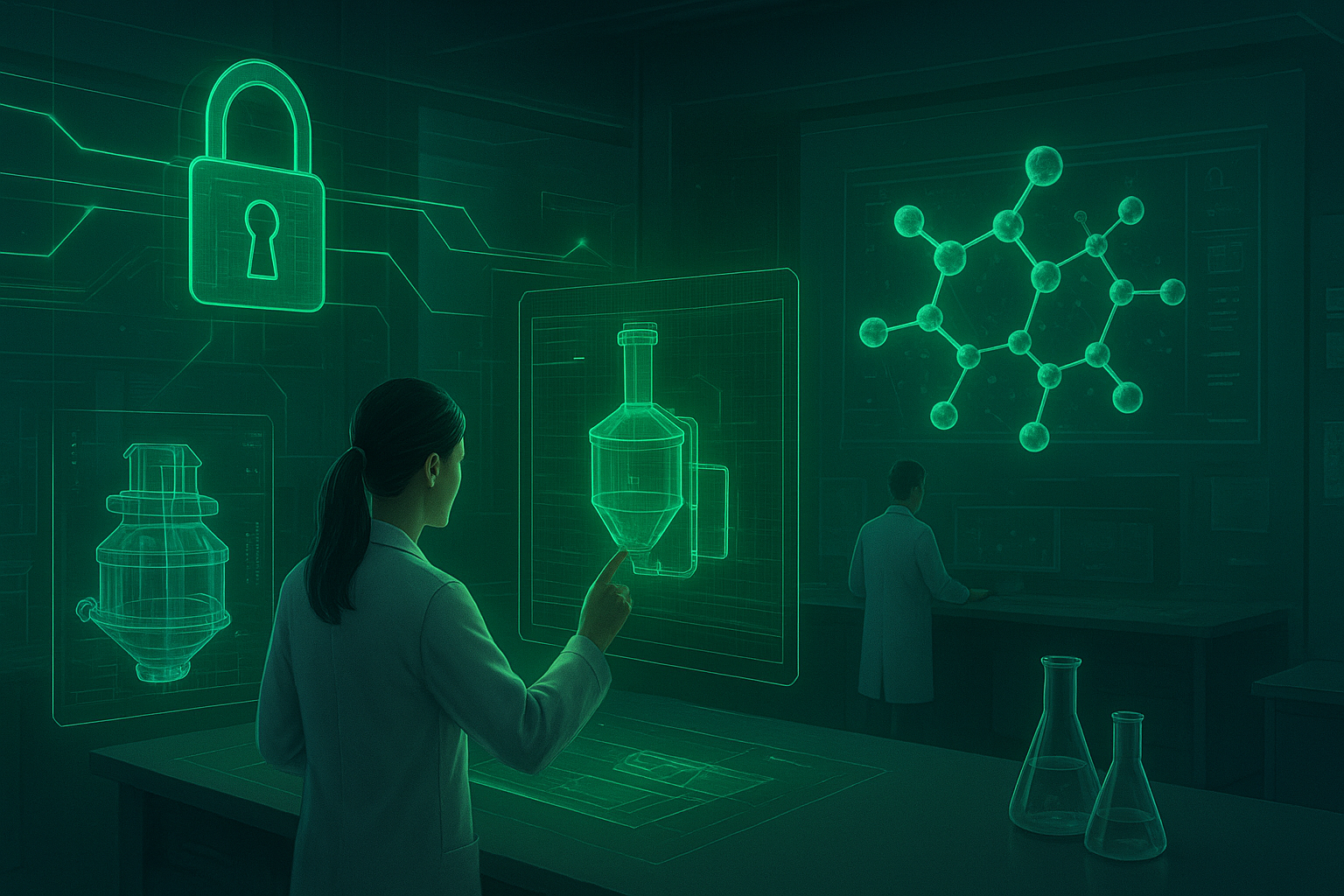From TLS to IGS: Securing and Accelerating the Digital Future of Chemical and Biological Data
Introduction: Why Chemistry Needs More Than Reactions—It Needs Security
The digital transformation of chemistry has gone far beyond data logging or formulation tracking. Today, laboratories are connected through cloud-based platforms, AI models train on shared data, and regulatory submissions flow through digital pipelines.
But this interconnectedness brings a new challenge: how to protect and standardize the data that fuels innovation.
Two acronyms—TLS and IGS—illustrate the hidden layers of this transformation. Though they originate from different domains, both play essential roles in the secure, interoperable future of chemical and biological research.
1. TLS: The Foundation of Secure Scientific Data Exchange
Transport Layer Security (TLS) is a cryptographic protocol designed to secure communication over networks like the internet. It ensures three key properties fundamental to AI-enabled chemistry:
| Security Property | Why It Matters for Chemistry and AI |
|---|---|
| Confidentiality | Protects sensitive formulation data, research results, and regulatory submissions from interception. |
| Integrity | Guarantees that digital data—such as reaction parameters or molecular models—cannot be altered during transfer. |
| Authentication | Verifies that data is being exchanged between legitimate systems, such as a trusted PLM platform and an AI model. |
When you see “https://” in your browser or a padlock icon in your lab management software, TLS is silently at work. It’s what prevents an AI-driven formulation engine from sending results to the wrong endpoint or exposing proprietary reaction data to a malicious actor.
AI Connection: Enabling Secure Collaboration
Modern AI workflows often rely on federated learning—where multiple laboratories or companies contribute model insights without sharing raw data. TLS encryption allows these exchanges to happen securely, maintaining compliance with both data protection laws and intellectual property boundaries.
In this sense, TLS is not just a security layer; it’s an enabler of collaboration in the digital chemical ecosystem.
2. IGS: The Language of Interoperable Scientific Design
The acronym IGS has many meanings, but in scientific and industrial contexts, two stand out as highly relevant to chemistry and AI.
IGS as the Initial Graphics Exchange Specification
In chemical engineering and equipment design, .igs files (Initial Graphics Exchange Specification) serve as a neutral format for sharing 2D and 3D CAD data between different design applications.
For instance, a reactor designed in SolidWorks can be exported as .igs and reanalyzed in simulation software to predict temperature gradients or optimize fluid dynamics.
AI Connection: From CAD to Digital Twins
AI-driven process simulators can ingest .igs files to automatically:
Detect design inefficiencies in reactors or mixers
Predict heat transfer or crystallization performance
Optimize equipment geometry for energy efficiency
These AI-assisted digital twins bridge engineering and chemistry, transforming static CAD models into living, learning systems that improve over time.
3. IGS in Bioinformatics: Immunological Gene Signatures
In the biomedical branch of chemistry, IGS stands for Immunological Gene Signatures—patterns in genetic expression that reveal how the immune system responds to disease or treatment.
Interestingly, in this context, TLS reappears with a new meaning: Tertiary Lymphoid Structures—localized immune cell clusters that often appear in tumors.
AI models are increasingly used to correlate IGS data with TLS presence, identifying how immune microenvironments influence treatment efficacy.
This crossover illustrates how machine learning now connects chemistry, biology, and clinical data to accelerate discoveries—from molecular diagnostics to personalized therapy.
4. Where TLS and IGS Intersect in the Digital Chemistry Ecosystem
While TLS (encryption) and IGS (data exchange or gene signatures) belong to different domains, they intersect in the broader transformation toward secure, AI-driven scientific ecosystems.
| Layer | Concept | Role in AI-Driven Chemistry |
|---|---|---|
| Infrastructure Layer | TLS (Transport Layer Security) | Ensures encrypted, authenticated communication between AI agents, databases, and lab systems. |
| Design Layer | IGS (.igs CAD format) | Enables interoperability and digital twins in chemical process design. |
| Bioinformatics Layer | IGS (Immunological Gene Signatures) | Supports AI analysis of biological and chemical interactions in drug discovery. |
| Cross-Layer Connection | AI Integration | Uses TLS-secured data pipelines to learn from IGS datasets, driving insights across chemical and biological domains. |
This layered integration defines the next generation of scientific R&D—one where security, interoperability, and intelligence operate in harmony.
5. ChemCopilot’s Vision: Secure AI for Chemistry
ChemCopilot’s ecosystem embodies the same principles:
TLS-secured communication ensures that all AI-driven predictions, CO₂ calculations, and regulatory integrations occur within a protected digital environment.
Interoperable formats like IGS to TLS files allow ChemCopilot’s AI to visualize, simulate, and optimize chemical processes directly from digital twin models.
Cross-domain intelligence extends beyond formulation or compliance—toward a future where chemical, biological, and environmental data converge securely.
In other words, TLS protects how AI learns, and IGS defines what AI learns from.
Conclusion: Building a Trustworthy AI Ecosystem for Science
In the race to digitize and decarbonize chemistry, trust is the ultimate catalyst.
Whether it’s safeguarding formulations, connecting global labs, or modeling immune responses, technologies like TLS and IGS ensure that scientific data remains both intelligent and integrity-driven.
By embedding these protocols into AI systems, chemistry can move faster—without ever compromising what matters most: security, collaboration, and truth in data.

